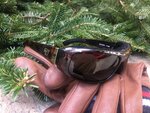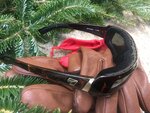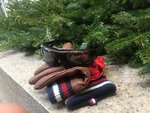55 is still cold for the cells. 70-80F is their ideal temp.
Anything over 60 or even 55 is good enough.
If inside , i charge it for 30-45min. Before leaving and that warms it up a bit and i also keep cover on during winter when inside.
Then once out and riding and with cover on itvwill stay warm . But leaving it outside for longer then 30min. Even with the cover on In cold is not good.
I use a custom Aerogel+ Neoprene cover.
In their tests for aerogel 10mm thick membrane , It can get as cold as -300F believe it or not , it still protects. Aerogel is Nasa stuff; very , very good insulation.
Google , youtube it.
I usually put the cover in November and leave it on until end of March. When i swap the batteries on a long ride i take it out, then back on.
each one of my battery has a 10mm aerogel cover then once inside the downtube , the whole area is covered with the neoprene zipped cover. It’s a little tight, i should have used the 3mm membrane . I will probably changed it as a 10cmX15cm is about 15$. It needs 2 of those for my 605wh bat.
I needed the neoprene b/c on the downTube area The way i did it, i could not apply/ use the aerogel material. I wrapped the battery with it only.
Allthough i could do a whole cover aerogel insert inside a zipped neoprene.
Would need a Singer Sewing machine.
I may offer them for sale eventually, as that would be the ultimate protection for a battery.
I would need the original cover and will create a custom cover based on that one’s dimensions.
Maybe 95-135$. The battery will NOT loose any efficiency at -30 or -300F

. That is on Mars.
Ps- sorry for the spelling/grammar/punctuation mistakes. Just wanted to lay it down fast...



:max_bytes(150000):strip_icc()/__opt__aboutcom__coeus__resources__content_migration__treehugger__images__2019__02__IMG_0329-a4358d1e63044d5ea242c852f4221395.jpg)